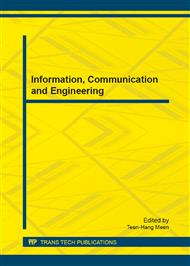p.360
p.366
p.375
p.380
p.386
p.392
p.398
p.404
p.413
An Integrated Model of Flexible Design Process for Taiwanese Housing Developments
Abstract:
This paper proposes a human-centered design approach to provide a model of flexible design process for private housing development in Taiwan. By integrating concepts of “Open Building” and “Open Source Building”, this paper suggests the scope for the ongoing customization of individual units within housing developments that intends to facilitate real-world, sustainable development for the Taiwanese housing market. Also, it argues that the current market-led design approach creates inherent problems for the Taiwanese housing developments. However, in Taiwan’s housing sectors are coupled with entrenched, unsustainable decision-making from housing developers and particularly the intractable communication gap between developers, architects and homebuyers. The current circumstance is that architects often lack professional integrity and serve the interests of developers before those of home occupants as well as the wider community. Noticeably, growing global awareness of sustainable development has recast housing as an intrinsic component of the urban environment and successful communities. In Taiwan, short-term profitability rather than long-term sustainability drives private housing. As a result, by employing a series of exploration to current design process and the principle of design management, this paper will 1) analyze the flawed relationships between Taiwanese developers, architects, interior designers and homebuyers, explaining how these lead to inferior housing design and the waste of significant human, material and financial resources; and 2) then concludes a model of flexible design process integrated the concepts of human-centered design approach, Open Building and customization of Taiwanese townhouse developments. Consequently, such approach can significantly improve the flexibility of the present design process in terms of better meeting end-user requirements, the demands of sustainability, whilst ensuring the continued commercial viability of housing developments.
Info:
Periodical:
Pages:
386-391
Citation:
Online since:
February 2013
Authors:
Price:
Сopyright:
© 2013 Trans Tech Publications Ltd. All Rights Reserved
Share:
Citation:


